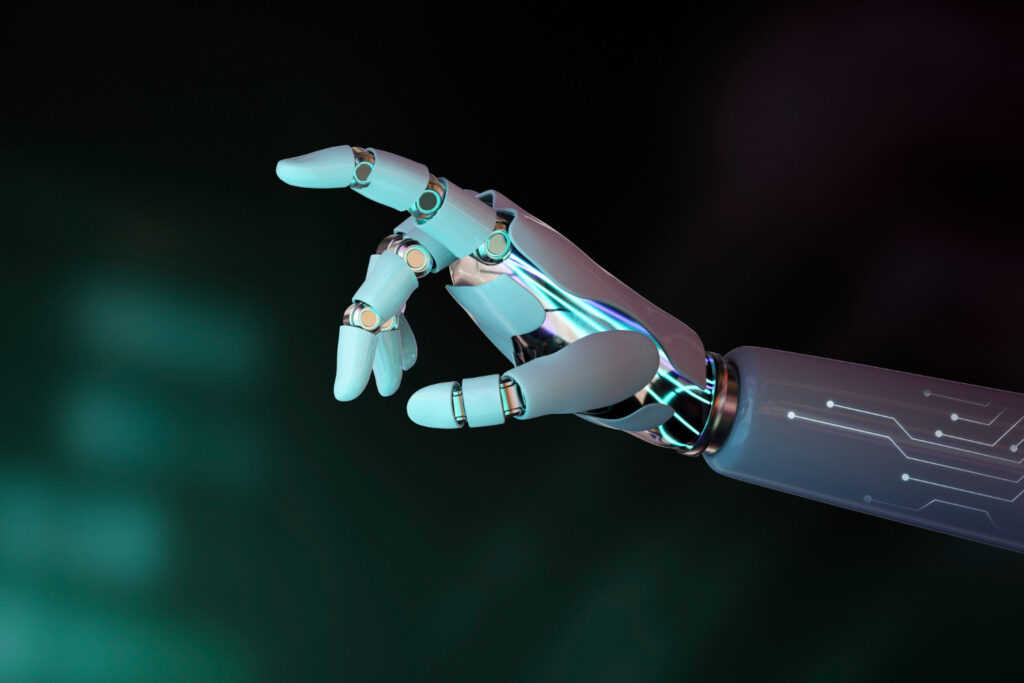Table of Contents
Introduction
Alright, let’s set the stage. Welcome to a brave new world in which technology and human potential collide in an exciting movement known as transhumanism. Transhumanism, my friend, is the use of technology to improve human capabilities and push us beyond our biological limits. It’s like stepping into the future and actively shaping our own evolution. Isn’t that mind-boggling? In this blog post, we’ll take a look at how transhumanism is reshaping our world and paving the way for an extraordinary future. Prepare for mind-bending possibilities and thought-provoking debates!
Transhumanism Unveiled
Let us begin by deconstructing transhumanism. Transhumanism isn’t just a buzzword or a science-fiction concept; it’s a growing movement that’s capturing the imaginations of thinkers, scientists, and enthusiasts alike. Transhumanism, at its core, is a philosophy that embraces the idea of using technology to enhance human capabilities and propel us into a future beyond our biological limitations.
The belief that humanity has the potential to evolve beyond its current state is the driving force behind transhumanism. It challenges the idea that we must accept biological limitations and seeks to break free from the constraints that have defined our existence for centuries. Transhumanists envision a future in which technological advancements will allow us to improve our physical, mental, and emotional capacities, pushing the boundaries of what it means to be human.

This movement is about embracing our potential to become something greater, not rejecting our humanity. It recognizes that technology has the ability to amplify our strengths, compensate for our weaknesses, and unlock previously unimaginable possibilities. Transhumanists are paving the way for a future in which we can redefine our capabilities and shape our own evolution by fusing human intelligence with artificial intelligence, integrating our bodies with advanced prosthetics, and even exploring the possibilities of mind uploading and digital consciousness.
However, transhumanism is not without controversy and skeptics. According to critics, it promotes a reductionist view of human nature and risks undermining our core values and ethics. They express concern about the possibility of societal upheaval, loss of human identity, and the emergence of new inequalities. These discussions emphasize the importance of thoughtful debates and ethical considerations as we navigate the uncharted territories of transhumanism.
Transhumanism challenges us to question the status quo and investigate the possibilities that exist at the crossroads of technology and human potential. It is a call to embrace curiosity, innovation, and the pursuit of knowledge as we seek to expand the boundaries of human existence. Transhumanism, by harnessing the power of technology, offers a glimpse into a future where our limitations do not have to define us and where we can transcend the boundaries of what it means to be human.
A Brief History of Transhumanism
To truly comprehend transhumanism’s present and future implications, we must first investigate its fascinating historical roots. While the term “transhumanism” is new, the idea of enhancing human capabilities and transcending biological limitations has been explored by various cultures throughout history.
Transhumanist thought has its roots in ancient civilizations that sought to unravel the mysteries of human potential. Philosophical and religious texts from antiquity, including those from Greece, China, and India, contain discussions on the possibility of achieving enhanced states of being, longevity, and even immortality. These early ideas laid the groundwork for thinking about the potential of human evolution.
Fast forward to the twentieth century, when transhumanism emerged as a distinct movement. Julian Huxley, a British biologist, coined the term in 1957. Huxley imagined a future in which science and technology could be used to better the human condition and propel us into a new phase of existence.
FM-2030, formerly known as Fereidoun M. Esfandiary, is another influential figure in the history of transhumanism. FM-2030 was an Iranian-American futurist who helped popularise transhumanist ideas. He began lecturing and writing extensively about the potential of human transformation through technology in the 1970s, emphasizing the importance of embracing change and transcending our biological limitations.
In the 1980s and 1990s, organizations and communities centered on transhumanist ideals emerged. Max More founded the Extropy Institute, which became a hub for transhumanist thinkers and a catalyst for further research into topics such as life extension, artificial intelligence, and cognitive enhancement. These discussions laid the groundwork for a more comprehensive understanding of transhumanism and its potential consequences.
Transhumanism found a platform for widespread dissemination as the internet age dawned. Transhumanists used online forums, blogs, and social media networks to connect, exchange ideas, and form communities. The movement grew in popularity and visibility, attracting people from various fields such as scientists, philosophers, technologists, and futurists.
Transhumanism is still evolving and spreading today. It has evolved into a vibrant and diverse field of study that includes interdisciplinary research, philosophical debates, and practical applications. Transhumanist ideas have influenced fields such as artificial intelligence, biohacking, and longevity research, pushing the limits of what was previously thought to be possible.
As we look back on transhumanism’s history, we recognize the visionary thinkers who paved the way for this movement. Their contributions and ideas have shaped our current understanding and continue to inspire us to push the boundaries of human potential. Transhumanism is a testament to our innate curiosity, drive for advancement, and desire to transcend our limitations.
Technological Advancements Driving Transhumanism
A slew of remarkable technological advancements that are pushing the limits of human potential are propelling transhumanism forward. These cutting-edge technologies have the potential to change our lives and reshape our very being. Let us take a look at some of the key innovations that are propelling the transhumanist movement.
Artificial intelligence (AI) is a key pillar of transhumanism. AI systems can learn, reason, and process massive amounts of data at rates far exceeding human abilities. AI can analyse data, recognise patterns, and predict outcomes with incredible accuracy thanks to machine learning algorithms. AI has the potential to transform many fields, including medicine, education, and communication, as it advances.
The development of advanced prosthetics and exoskeletons is one exciting application of AI in transhumanism. These technologies aim to restore or improve physical abilities in people with disabilities, as well as to improve the performance of people who are able-bodied. Amputees can regain dexterity, control, and even a sense of touch with AI-powered prosthetics, allowing them to live more independent lives. Exoskeletons, similarly, provide superhuman strength and endurance, assisting workers in physically demanding industries and allowing individuals to exceed their natural physical limitations.
Another driving force behind transhumanism is the field of genetics and biotechnology. Genetic engineering, gene editing, and gene therapy advances have the potential to transform healthcare and human well-being. Scientists can now edit the DNA code precisely, correcting genetic mutations that cause diseases and inherited disorders. This discovery opens the door to eradicating hereditary conditions and improving desirable traits like intelligence or athletic performance. Gene therapies have the potential to cure previously incurable diseases while also improving human resilience.
With its ability to manipulate matter at the atomic and molecular levels, nanotechnology has enormous potential in transhumanism. Nanoscale devices and materials can be designed to interact precisely and selectively with biological systems. Consider tiny nanobots that can navigate our bloodstream with unparalleled precision, delivering targeted therapies or performing delicate surgical procedures. Nanotechnology also paves the way for tissue engineering and regenerative medicine, potentially allowing for the regeneration of damaged organs or even the growth of entirely new ones.
Brain-computer interfaces (BCIs) represent a new frontier in transhumanist technology, blurring the distinction between man and machine. BCIs connect the human brain to external devices, allowing us to control computers, prosthetics, and even virtual environments with our thoughts. The possibilities for cognitive augmentation are staggering, thanks to advancements in neural implants and non-invasive brain-monitoring technologies. BCIs have the potential to improve memory, learning abilities, and direct communication between individuals via brain-to-brain interfaces.
Technologies such as virtual reality (VR) and augmented reality (AR) are also contributing to the transhumanist vision. VR immerses users in virtual worlds, whereas AR superimposes digital information on the real world. These technologies enable enhanced learning experiences, virtual travel, and collaborative work environments that are not limited by physical boundaries. As VR and AR technologies advance, they have the potential to change how we perceive reality and interact with our surroundings.
As we observe the rapid advancement of these technological domains, it becomes clear that we are on the verge of transformative change. The convergence of artificial intelligence, genetics, nanotechnology, brain-computer interfaces, and immersive technologies is fueling a paradigm shift in how we understand and improve the human experience. Transhumanism is at the forefront of this revolution, embracing technological advances to unlock human potential, extend our capabilities, and shape a future in which the boundaries of what it means to be human are redefined.
Cognitive Enhancement and Expanded Intelligence
Neuroscientific Advances and Cognitive Enhancement
Neuroscience advancements have paved the way for exciting possibilities in cognitive enhancement. Researchers are delving into the complex workings of the human brain in order to solve its mysteries and realise its full potential. Scientists are developing novel techniques to improve various aspects of mental function by better understanding the underlying mechanisms of cognition.
The field of neurostimulation, which involves the use of electrical or magnetic impulses to modulate brain activity, is one promising avenue. Non-invasive techniques such as transcranial magnetic stimulation (TMS) and transcranial direct current stimulation (tDCS) have shown promise in improving memory, attention, and learning. To improve cognitive performance, these approaches involve applying targeted stimulation to specific brain regions, either increasing or decreasing their activity. While these methods are still being researched and refined, they offer promising non-pharmacological cognitive enhancement prospects.
Pharmacological Approaches to Cognitive Enhancement
Pharmaceutical interventions, also known as “smart drugs” or nootropics, are another option for cognitive enhancement. These compounds are intended to improve cognitive function, memory, focus, and attention. While some nootropics are already in use for medical purposes, such as ADHD medications, researchers are looking into developing new compounds that are specifically designed to improve cognitive abilities.
The use of pharmaceutical cognitive enhancers, on the other hand, raises ethical concerns. There are concerns about the potential risks, long-term effects, and equity of access to these substances. It is critical to strike a balance between the desire for cognitive enhancement and the need for rigorous scientific research, responsible regulation, and a thorough understanding of the potential benefits and risks of pharmacological cognitive enhancement.
Brain-Computer Interfaces and the Merging of Human and Artificial Intelligence
Integration of technology and the human mind holds enormous promise for cognitive enhancement. Brain-computer interfaces (BCIs) are a revolutionary field that enables direct communication and interaction between the human brain and external devices. BCIs have the potential to revolutionize how we augment our cognitive abilities by leveraging the power of artificial intelligence (AI).
BCIs allow people to control computers, prosthetic limbs, and other technologies solely with their minds. BCIs can enable seamless interaction between the human brain and the digital world by translating neural signals into commands. This opens up incredible opportunities for people with disabilities as well as those looking to improve their cognitive abilities.
Consider a future in which people can access vast amounts of information directly from their minds, communicate via brain-to-brain interfaces, and even collaborate with AI systems to solve complex problems. These developments have enormous potential for increasing human intelligence and reshaping how we interact with the world around us.
However, as we navigate the development and integration of BCIs, ethical concerns emerge. Questions arise regarding privacy, security, and the potential for cognitive enhancement to exacerbate existing inequalities. It is critical to put in place strong safeguards to protect individuals’ autonomy and privacy, as well as to ensure that the benefits of cognitive enhancement are available to all members of society.
Extending Lifespan and Overcoming Biological Limitations
The Pursuit of Immortality and Longevity
One of the central goals of transhumanism is to extend human lifespan and achieve immortality. Long have researchers and scientists sought to understand the mechanisms of ageing and to find ways to delay or reverse its effects. Recent advances in biotechnology, genetics, and regenerative medicine promise to extend human life and overcome biological limitations.
Scientists are shedding light on the complexities of ageing at the cellular and molecular levels, identifying key factors that contribute to the ageing process. Telomeres, the protective caps at the ends of our chromosomes, for example, have been discovered to shorten with each cell division, eventually leading to cellular senescence and ageing. Researchers are looking into ways to preserve or extend telomeres, which could slow the ageing process and promote longevity.
Furthermore, regenerative medicine has enormous potential for rejuvenating and repairing damaged tissues and organs. Stem cell therapies, tissue engineering, and organ transplantation all have the potential to replace or regenerate failing organs, thereby extending healthy lifespan. We can imagine a future where age-related diseases are manageable, if not eradicated, by harnessing the body’s natural regenerative capacities and combining them with advanced medical technologies.
However, the pursuit of a longer life raises ethical concerns. There are concerns about resource allocation, population growth, and the impact on social structures. It is critical to approach the goal of longevity holistically, taking into account not only the individual benefits but also the broader implications for society as a whole.
Biohacking and Self-Experimentation
Biohacking is a growing movement within transhumanism that involves self-experimentation and self-modification. Biohackers seek to improve their physical and cognitive performance through a variety of methods, such as lifestyle changes, dietary changes, and the use of technology and supplements. The goal is to master one’s own biology and push the limits of human potential.
Biohackers investigate techniques such as nutritional interventions, fasting, exercise regimens, and nootropic substances to improve cognitive abilities, energy levels, and overall well-being. Some people even implant technological devices into their bodies, such as microchips or sensors, to monitor and manipulate physiological functions.
While biohacking allows people to take an active role in their health and well-being, it also raises ethical concerns. The lack of regulation and potential risks associated with certain biohacking practises highlight the importance of responsible experimentation, informed decision-making, and thorough research to ensure safety and efficacy.
Conclusion
Finally, transhumanism has the potential to transform our world in ways we can only imagine. We can overcome biological limitations, extend our lives, and push the boundaries of human potential by leveraging technology to enhance our capabilities. However, caution is required to ensure responsible development, ethical considerations, and equitable access to the benefits of transhumanism. Humanity’s future is being shaped, and transhumanism offers an extraordinary path forward.
As we say goodbye, keep in mind that transhumanism is not just a concept for the distant future; it is a movement that is already changing our current reality. Let us seize the opportunities, overcome the obstacles, and shape a transhumanist future that truly uplifts and empowers humanity.





